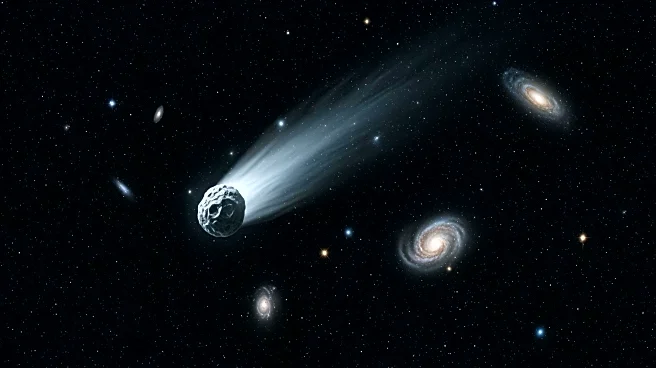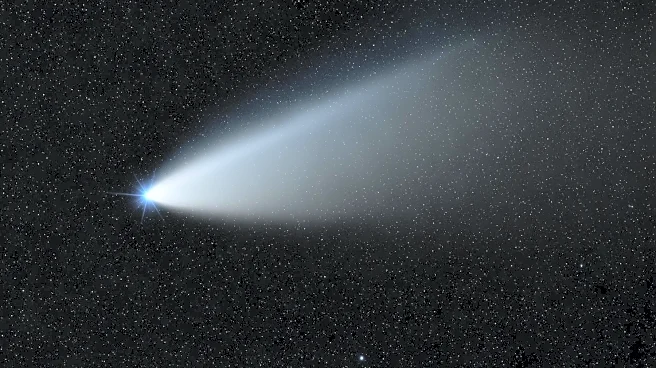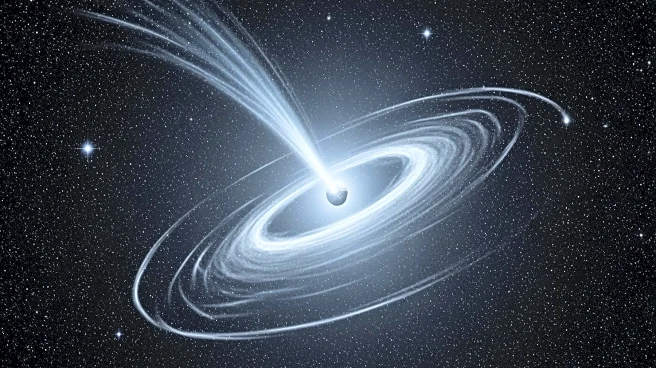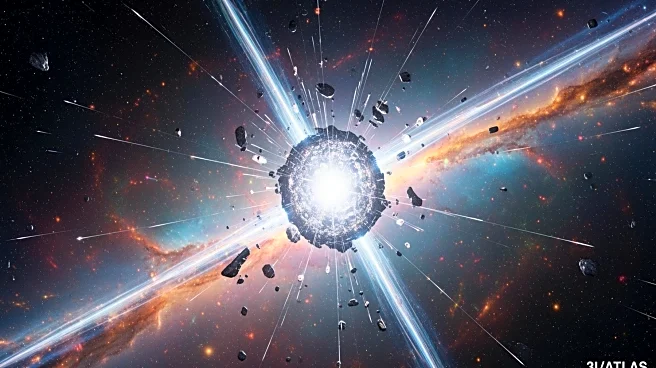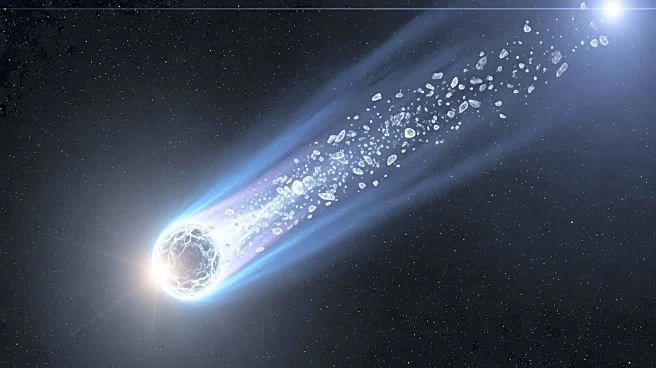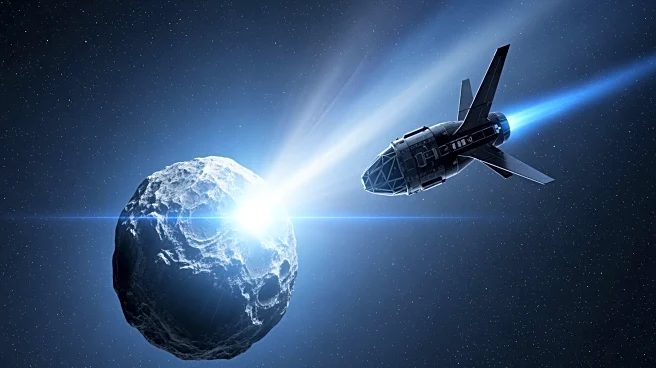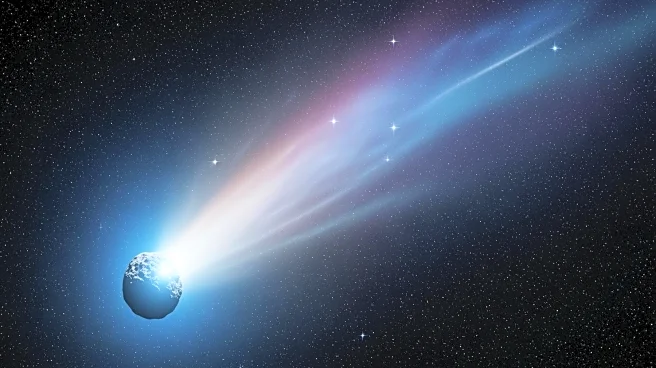What's Happening?
On November 2, 2025, astronomer Gennady Borisov discovered a new object in the inner solar system, officially labeled as C/2025 V1 (Borisov). This object is described as 'nearly interstellar' due to its
orbital characteristics, which include an inclination of 113 degrees relative to the ecliptic plane and an orbital eccentricity of 1.0095. Despite these features, C/2025 V1 is believed to have originated from the Oort cloud, a region at the outskirts of the Solar System. The object's eccentricity suggests it is not truly interstellar, as it would need to exceed 1 by a large margin to be considered unbound by the Sun's gravity. The discovery follows the perihelion passage of another interstellar object, 3I/ATLAS, which has shown non-gravitational acceleration and complex jet structures. The relationship between C/2025 V1 and 3I/ATLAS is under scrutiny, with current evidence suggesting they are not related unless non-gravitational propulsion was involved.
Why It's Important?
The discovery of C/2025 V1 adds to the growing interest in interstellar objects and their potential implications for understanding the solar system's boundaries and the nature of objects originating from the Oort cloud. The study of such objects can provide insights into the composition and behavior of celestial bodies that traverse the solar system. The investigation into whether 3I/ATLAS represents a technological mothership releasing mini-probes raises significant questions about the presence of extraterrestrial technology. This could have profound implications for the scientific community and public perception of space exploration. The ability to differentiate between natural and potentially technological objects is crucial for advancing our understanding of the universe and assessing potential risks or opportunities associated with interstellar visitors.
What's Next?
Further observations and analyses are planned to determine the composition and behavior of C/2025 V1 and 3I/ATLAS. Spectroscopic studies using the Webb telescope are expected to provide detailed information about the debris cloud surrounding 3I/ATLAS as it approaches Earth on December 19, 2025. These studies will help ascertain whether the object is natural or technological by measuring the outflow velocity, mass flux, and composition of its jets. The scientific community is keen to understand the implications of these findings, which could influence future research and exploration strategies. The potential for technological thrusters on interstellar objects remains a topic of debate, and upcoming observations will be critical in resolving these questions.
Beyond the Headlines
The discovery of C/2025 V1 and the ongoing study of 3I/ATLAS highlight the ethical and scientific challenges associated with identifying and interpreting interstellar objects. The possibility of technological artifacts in space raises questions about the readiness of current scientific methodologies to detect and analyze such phenomena. The implications of finding evidence of extraterrestrial technology could lead to significant shifts in scientific priorities and public interest in space exploration. Additionally, the study of these objects may contribute to broader discussions about the search for extraterrestrial intelligence and the potential for future encounters with non-terrestrial technologies.
